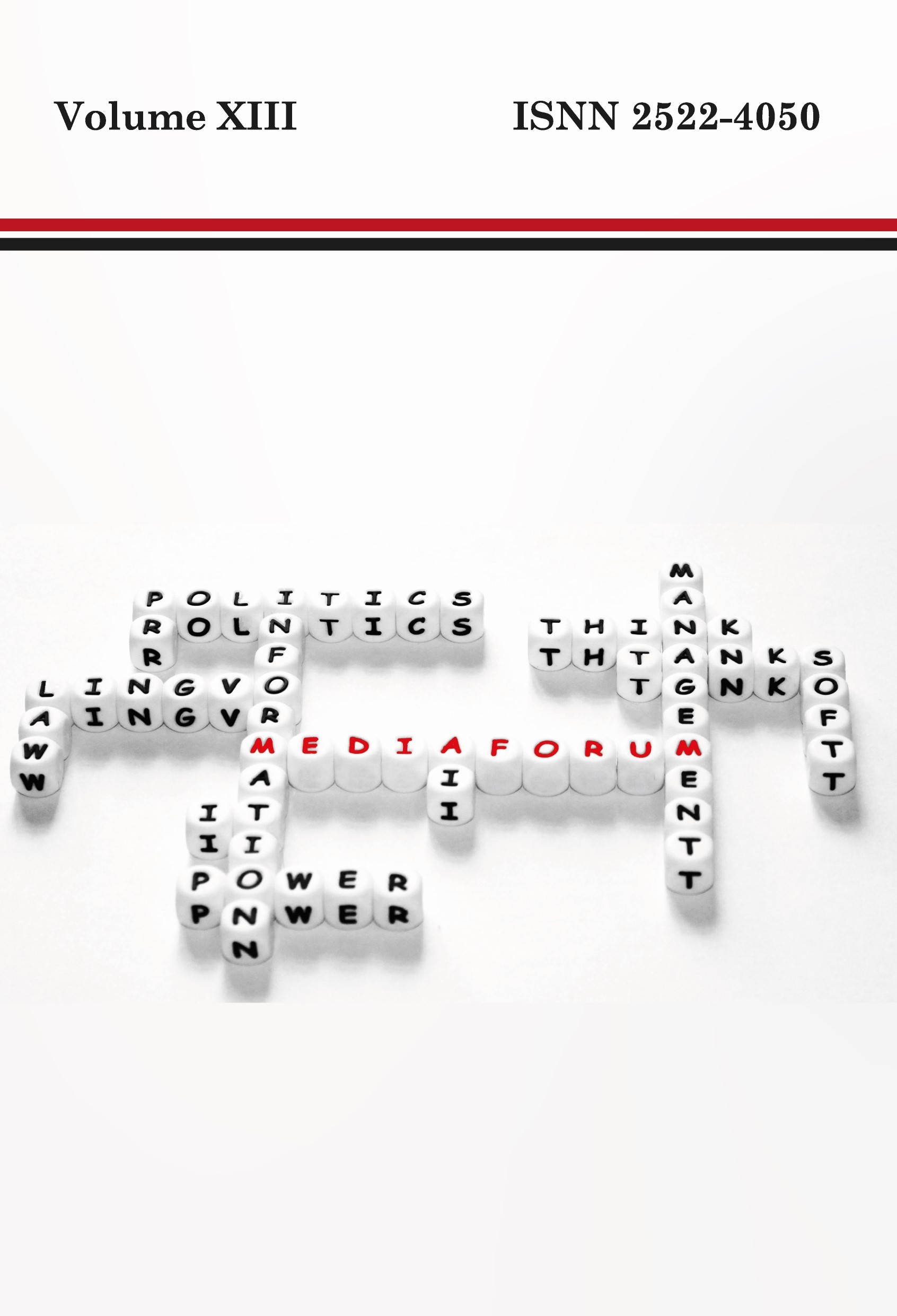European Defense and Security Integration: a Retrospective Review
DOI:
https://doi.org/10.31861/mediaforum.2023.13.228-244Keywords:
collective defense, Cold War, European integration, Treaty of Brussels, European Defense Community (EDC), European Coal and Steel Community (ECSC), Western European Union (WEU), North Atlantic Treaty Organisation (NATO)Abstract
Although the end of the Second World War brought long-awaited peace to Europe, a new totalitarian threat, the Soviet Union, emerged almost immediately. After the former anti-Hitler coalition allies found themselves on different sides of the “iron curtain”, the countries of the democratic camp faced a difficult task: how to mobilise the efforts of the war-ravaged countries of “free Europe” and enable them to fend off a possible Soviet expansion. Given the fears that the societies of European countries might compel their governments to satisfy any demands of the Soviet Union for the sake of avoiding another war, it was crucial for the West to project unity and demonstrate readiness to resist the Soviet onslaught. hence the inevitability of the United States’ involvement as a guarantor of Western Europe’s security. Thus, the very first projects of European military-political integration – the Treaties of Dunkirk and Brussels – were to become no more than the basis for the gradual involvement of the U.S. It is noteworthy that even after the formation of the North Atlantic Treaty Organization, the idea of purely European integration was not off the table. The reasons for this, however, are quite pragmatic. While Jean Monnet and Robert Schuman, the originators of the idea of unifying Europe, considered the ultimate goal of the European Coal and Steel Community (ECSC) and the European Defense Community (ECC) to be the formation of a supranational European federation, the European countries and especially the United States considered the ambitious EDC project exclusively as a way of solving the more pressing problems, such as the rearmament of West Germany and its gradual integration into NATO. This, coupled with the general unpreparedness of European countries for such a close union, led to the failure of the EDC, which would largely determine the course of European integration for decades.
Downloads
References
“Convention on Relations between the Three Powers and the FRG.” 1952. CVCE.EU. May 26, 1952. https://www.cvce.eu/en/obj/convention_on_relations_between_the_three_powers_and_the_frg_bonn_26_may_1952-en-b1885d93-c91a-4fa7-80bd-e1d3b3171b87.html.
European Defence Agency. n.d. “Our History.” Accessed February 10, 2024. https://eda.europa.eu/our-history/our-history.html.
“European Defense Community Treaty.” 1952. Archives of European Integration. May 27, 1952. https://aei.pitt.edu/5201/1/5201.pdf.
Fedyszyn, Thomas. 2010. “Saving NATO: Renunciation of the Article 5 Guarantee.” Orbis 54 (3): 374–86. https://doi.org/10.1016/j.orbis.2010.04.004.
Fleischer, Björn. 2015. “A European Army? The European Defense Community and the Politics of Transnational Influence in Post-War Europe, 1950-1954.” Doctoral thesis, Bremen International Graduate School of Social Sciences.
Kunz, Josef L. 1953. “Treaty Establishing the European Defense Community.” The American Journal of International Law 47 (2): 275–81. https://doi.org/10.2307/2194825.
Münch, Wolfganf. 1983. “European Defence Community.” In Regional Cooperation, Organizations and Problems, edited by Rudolf L. Bindschedler, Thomas Buergenthal, Karl Doehring, Jochen Frowein, Günther Jaenicke, Herbert Miehsler, Hermann Mosler, et al., 149–50. North-Holland. https://doi.org/10.1016/B978-0-444-86237-2.50048-2.
“Protocol to the North Atlantic Treaty on Guarantees given by the Parties to the North Atlantic Treaty to the Members of the European Defence Community.” 1952. NATO Archives. 1952. https://www.nato.int/archives/1st5years/annexes/b2.htm.
Ruokonen, Antti. 2022. “Why Finlandization Is a Terrible Model for Ukraine.” Lawfare. April 21, 2022. https://www.lawfaremedia.org/article/why-finlandization-terrible-model-ukraine.
Sayle, Timothy Andrews. 2023. Enduring Aliance: A History of NATO and the Postwar Global Order. Translated by M. Khandoha. Kharkiv: VD “Fabula.”
Smith, Mathhew. 2022. “Support for EU Army Grows across Europe Following Russian Invasion of Ukraine.” YouGov. May 5, 2022. https://yougov.co.uk/international/articles/42386-support-eu-army-grows-across-europe-following-russ?redirect_from=%2Ftopics%2Finternational%2Farticles-reports%2F2022%2F05%2F05%2Fsupport-eu-army-grows-across-europe-following-russ.
“Supreme Allied Commander Europe (SACEUR).” n.d. NATO. Accessed February 14, 2024. https://www.nato.int/cps/en/natohq/topics_50110.htm.
“The Brussels Treaty: Treaty of Economic, Social and Cultural Collaboration and Collective Self-Defence.” 1948. NATO. March 17, 1948. https://www.nato.int/cps/en/natohq/official_texts_17072.htm.
The Economist. 2022. “What Is ‘Finlandisation’?,” February 11, 2022. https://www.economist.com/the-economist-explains/2022/02/11/what-is-finlandisation.
“The North Atlantic Treaty.” 1949. NATO. April 4, 1949. https://www.nato.int/cps/en/natohq/official_texts_17120.htm.
Yakoviuk, Ivan Vasylovych, and Roman Ruslanovych Orlovskyi. 2017. “Yevropeiske oboronne spivtovarystvo: vytoky stanovlennia intehratsii v oboronnii sferi.” Problemy zakonnosti, no. 139 (December): 264–77. https://doi.org/10.21564/2414-990x.139.115332.















